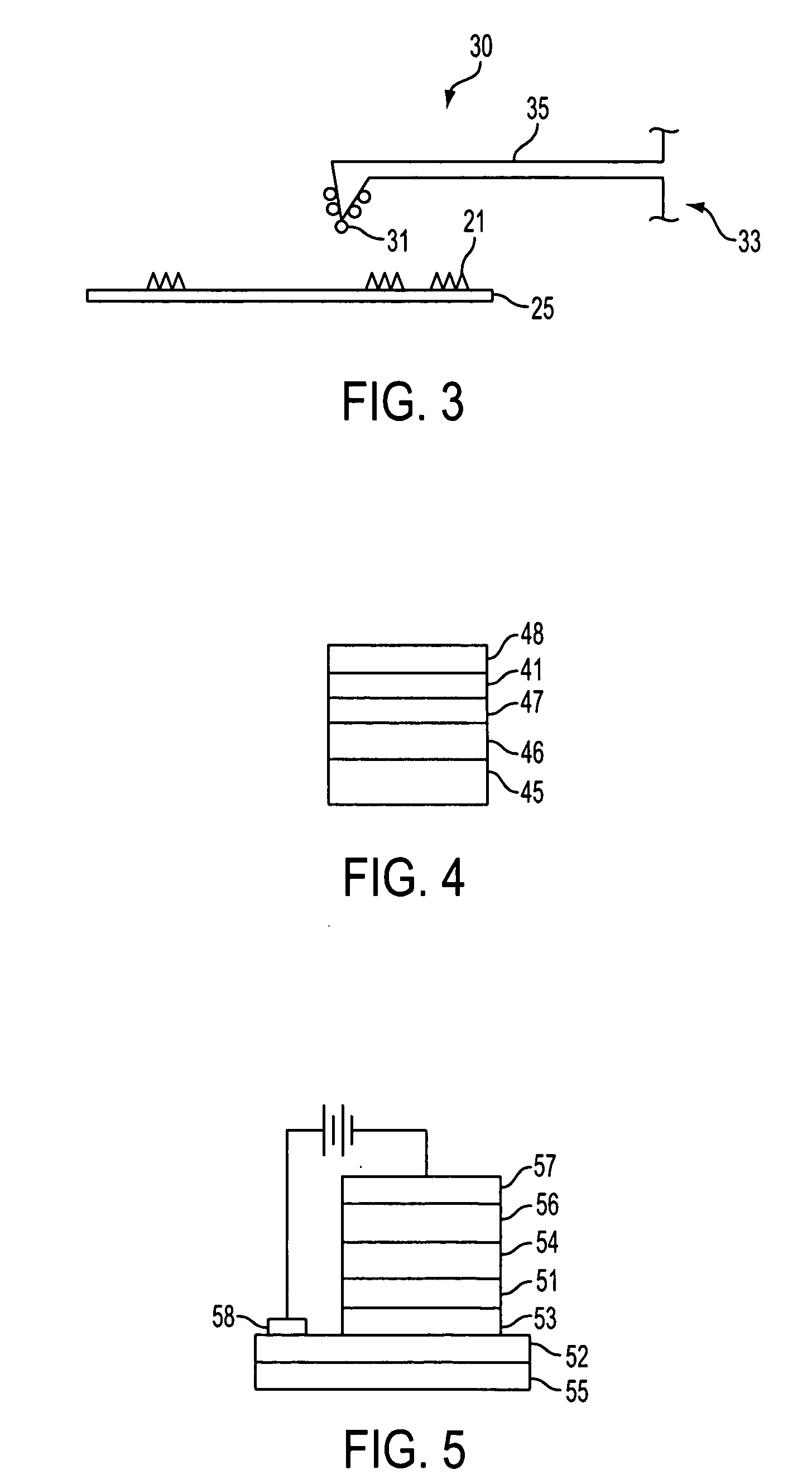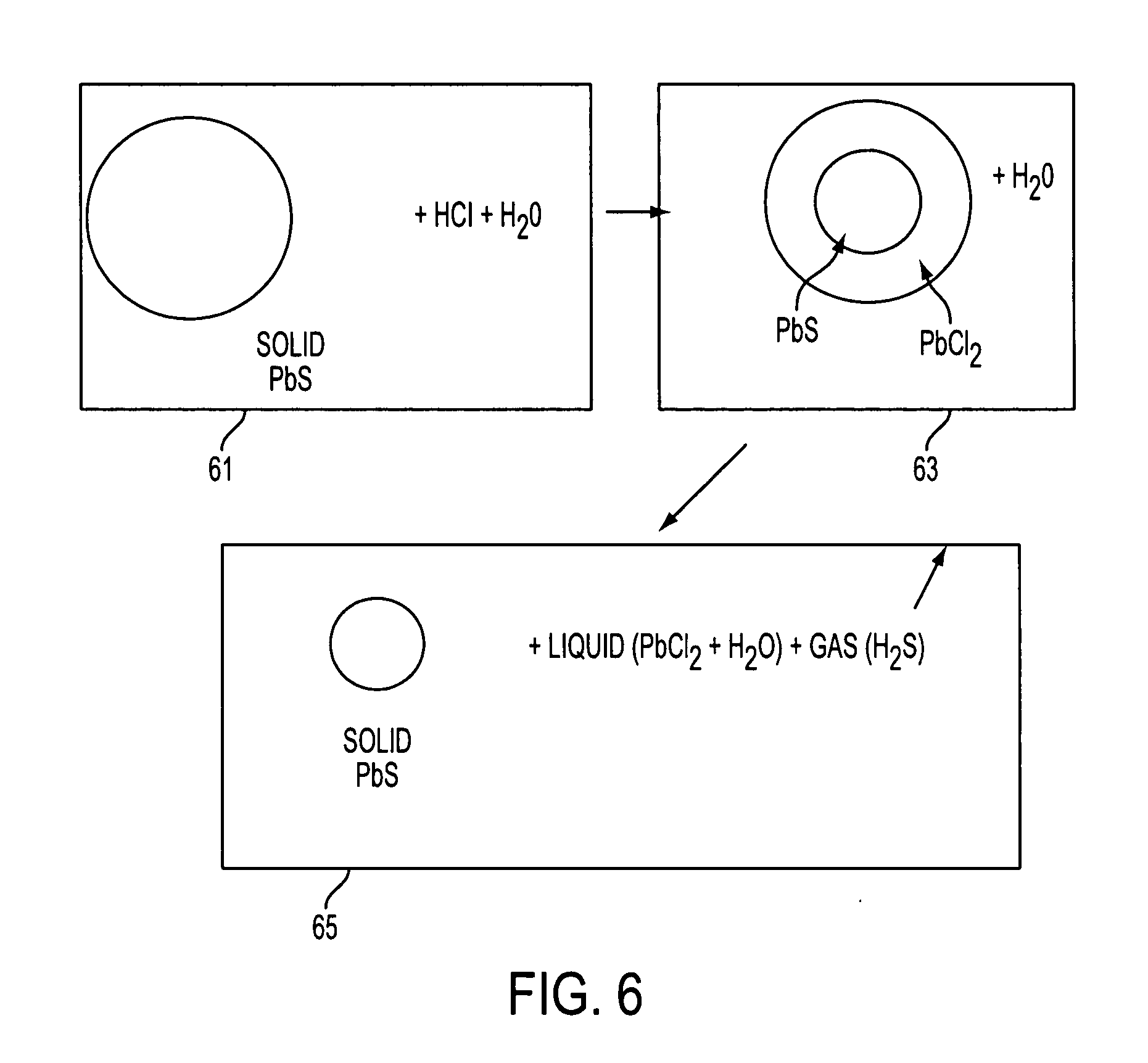Passivated nanoparticles, method of fabrication thereof, and devices incorporating nanoparticles
a technology of nanoparticles and passivating, which is applied in the field of passivating nanoparticles, can solve the problems of reducing the quantum efficiency of radiation and the production yield of nanoparticles, negatively affecting the optical and electrical properties of nanoparticles, and affecting the commercialization of nanoparticles
- Summary
- Abstract
- Description
- Claims
- Application Information
AI Technical Summary
Benefits of technology
Problems solved by technology
Method used
Image
Examples
example 1
[0091] PbS nanoparticles according to the preferred embodiments of the present invention were prepared by the following method. 2 grams of PbCl2 powder were dissolved in 100 ml of warm water at 60-70° C. 2 grams of Na2S powder were separately dissolved in 100 ml of warm water (60-70° C.). Both solutions were filtered using 20 nm pore filter paper. 5 ml of the above PbCl2 solution was added to 15 ml of above Na2S solution and mixed in an ultrasonic vibrator.
[0092] The nanoparticle containing solution was analyzed by photon correlated spectroscopy (PCS) using the N4 Plus Submicron Particle Analyzer made by Beckman Coulter, Inc. PCS is a dynamic light scattering (DLS) optical characterization technique which determines particle size based on Brownian motion of particles in a solution. In PCS, measurements of particle size are based on characterization of the time scale of fluctuations of the intensity of laser light scattered from the nanoparticle containing solution. The fluctuations...
example 2
[0094] In this example, the nanoparticles of example 1 were etched with diluted HCl. 1 ml of HCl was dissolved in 50 ml of H2O. 2 ml of the above solution was added to the nanoparticle containing solution of example 1. The PCS spectra of the solution containing the etched nanoparticles is shown in FIG. 8. The nanoparticles had a 53.3 nm average size with a standard deviation of 20.8 nm. Thus, adding HCl to the solution reduced the nanoparticle size without completely dissolving the nanoparticles.
example 3
[0095] In this example, the nanoparticles of example 2 were etched with additional diluted HCl. 1 ml of HCl was dissolved in 50 ml of H2O. 2 ml of the above solution was added to the nanoparticle containing solution of example 2. The PCS spectra of the solution containing the etched nanoparticles is shown in FIG. 9. The nanoparticles had a 17.6 nm average size with a standard deviation of 9.1 nm.
PUM
| Property | Measurement | Unit |
|---|---|---|
| size | aaaaa | aaaaa |
| size | aaaaa | aaaaa |
| temperature | aaaaa | aaaaa |
Abstract
Description
Claims
Application Information
 Login to View More
Login to View More - R&D
- Intellectual Property
- Life Sciences
- Materials
- Tech Scout
- Unparalleled Data Quality
- Higher Quality Content
- 60% Fewer Hallucinations
Browse by: Latest US Patents, China's latest patents, Technical Efficacy Thesaurus, Application Domain, Technology Topic, Popular Technical Reports.
© 2025 PatSnap. All rights reserved.Legal|Privacy policy|Modern Slavery Act Transparency Statement|Sitemap|About US| Contact US: help@patsnap.com



